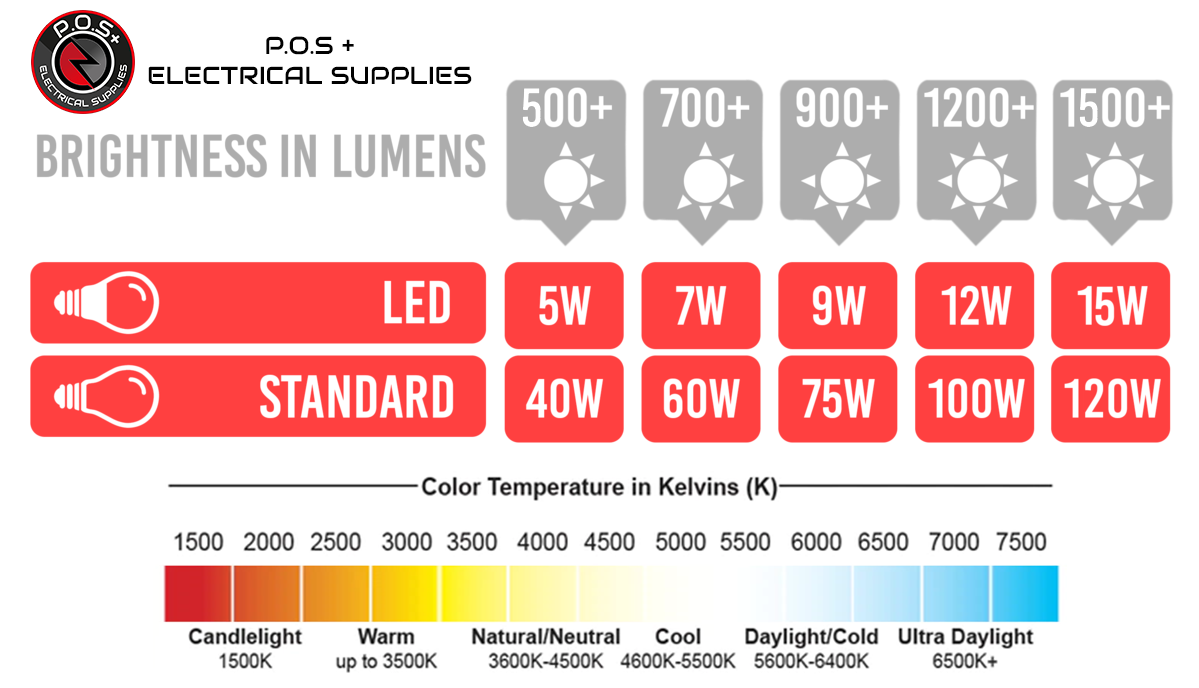Know the fitting and bulb shape
Bulbs come in a wide variety of fittings, such as screws, bayonets or pins and some fittings look the same but come in different sizes.. The easiest option is to take the old bulb or a picture on your phone with you and we can give you the correct replacement.
The shape of the bulb will affect how the light is distributed. Bulbs with a more traditional or candle shape offer an evenly distributed, diffuse light. Spotlights provide a more focussed light. You do not have to replace bulbs with one of the same shape; any bulb with the same fitting will work.
Bulbs come in a wide variety of fittings, such as screws, bayonets or pins and some fittings look the same but come in different sizes.. The easiest option is to take the old bulb or a picture on your phone with you and we can give you the correct replacement.
The shape of the bulb will affect how the light is distributed. Bulbs with a more traditional or candle shape offer an evenly distributed, diffuse light. Spotlights provide a more focussed light. You do not have to replace bulbs with one of the same shape; any bulb with the same fitting will work.
Colour Temperature Guide
2700K-3000K – Warm White
This is the colour temperature of traditional incandescent light bulbs and one of the most common colours used today. This is a nice, yellow glow, well suited to rooms meant for relaxing, such as living rooms and bedrooms. If a particular light in your home has a yellowish tinge to it, it is most likely a warm white light bulb.
4000K - Cool White
Cool white light bulbs have none of the warm yellow glow of warm white light bulbs. The light they emit is much crisper and is well suited to more stimulating environments, like kitchens and workplaces. They are also excellent for bathrooms as there is no colour-cast; so applying makeup is much easier. Many outdoor floodlights also use cool white light bulbs, as it provides a clear, bright light.
6000-6500K - Daylight
Daylight bulbs are so named because they replicate the natural light seen on an overcast day. If these are installed indoors, they can look very blue and, as a result, they don’t create a very cosy atmosphere. This colour is best avoided in bedrooms and living rooms and can be used instead for areas where accurate colour reproduction is required, such as retail, display and workplaces. They are also excellent for outdoor lighting or for areas where natural daylight enters through a window but the room is still too dim and needs brightening.
Smart bulbs
These are LED bulbs which connect to the Wifi or Bluetooth system within the home. They allow you to turn your lights on and off via a remote, your phone, your tablet or your voice controlled home assistance system. They also enable you to set timers for your lighting to come on and off. There is not much evidence that having this control saves you money, but they can be very useful for people with mobility issues or for those who have concerns around home security.
This is the colour temperature of traditional incandescent light bulbs and one of the most common colours used today. This is a nice, yellow glow, well suited to rooms meant for relaxing, such as living rooms and bedrooms. If a particular light in your home has a yellowish tinge to it, it is most likely a warm white light bulb.
4000K - Cool White
Cool white light bulbs have none of the warm yellow glow of warm white light bulbs. The light they emit is much crisper and is well suited to more stimulating environments, like kitchens and workplaces. They are also excellent for bathrooms as there is no colour-cast; so applying makeup is much easier. Many outdoor floodlights also use cool white light bulbs, as it provides a clear, bright light.
6000-6500K - Daylight
Daylight bulbs are so named because they replicate the natural light seen on an overcast day. If these are installed indoors, they can look very blue and, as a result, they don’t create a very cosy atmosphere. This colour is best avoided in bedrooms and living rooms and can be used instead for areas where accurate colour reproduction is required, such as retail, display and workplaces. They are also excellent for outdoor lighting or for areas where natural daylight enters through a window but the room is still too dim and needs brightening.
Smart bulbs
These are LED bulbs which connect to the Wifi or Bluetooth system within the home. They allow you to turn your lights on and off via a remote, your phone, your tablet or your voice controlled home assistance system. They also enable you to set timers for your lighting to come on and off. There is not much evidence that having this control saves you money, but they can be very useful for people with mobility issues or for those who have concerns around home security.
P.O.S+ Electrical 2024


